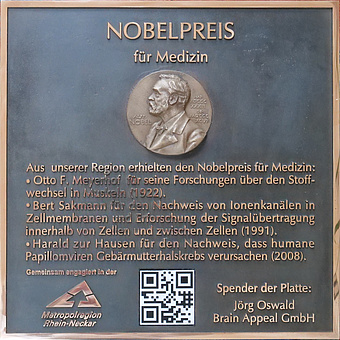Nobel laureate in medicine
Otto F. Meyerhof, Bert Sakamann, Harald zur Hausen
The Nobel Prize has been awarded since 1901. It is considered the world's highest award for scientists in the fields of physics, chemistry, physiology or medicine, as well as for literature and peace. The founder of the prize is the Swede Alfred Nobel.
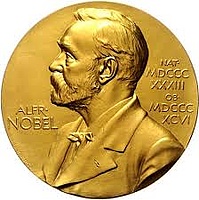
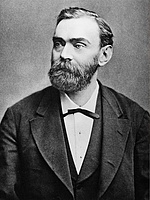
Having achieved great wealth with the invention of dynamite, Nobel decreed in his will in 1895 that almost all of his fortune go into a fund "the interest of which is to be distributed annually as a prize to those who have been of the greatest benefit to mankind during the past year." Nobel goes on to state that it was his express will that the most worthy receive the prize, regardless of nationality.
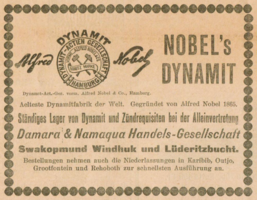
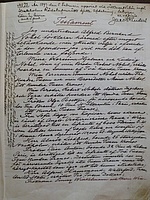
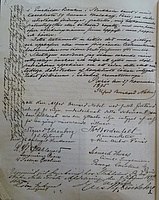
Every year on December 10, the anniversary of Nobel's death, the ceremonial awarding of the prize takes place in Stockholm and Oslo (Nobel Peace Prize).
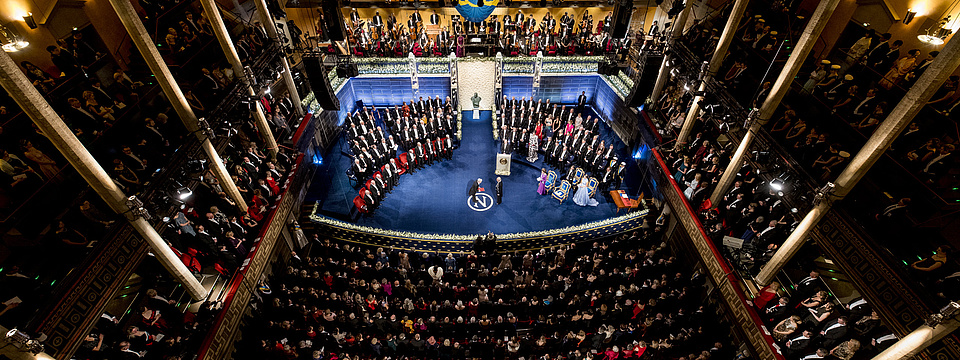
We can be proud that our region has also produced numerous Nobel Prize winners. In the category of physiology or medicine these are:
- Otto F. Meyerhof for his research on metabolism in muscles (1922).
- Bert Sakmann for his detection of ion channels in cell membranes and research into signal transmission within cells and between cells (1991).
- Harald zur Hausen for demonstrating that human papillomaviruses cause cervical cancer (2008).
Otto Fritz Meyerhof
Otto Fritz Meyerhof was born in Hanover on April 12, 1884, the son of a Jewish merchant. Four years after his birth, the family moves to Berlin. There Otto attended the Wilhelms Gymnasium, graduated in 1903 and began to study medicine and philosophy. He continued his studies in Freiburg, Strasbourg and Heidelberg.
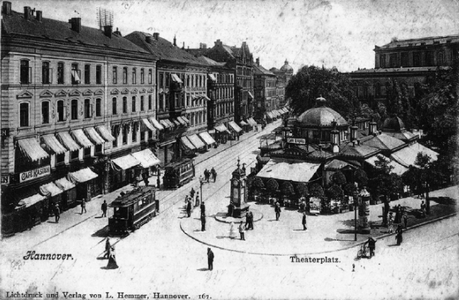
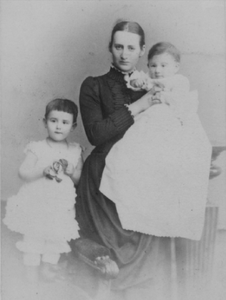
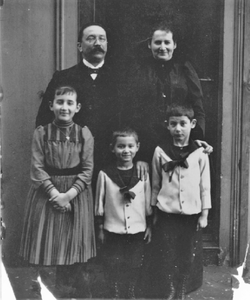
In December 1909, he received his doctorate in Heidelberg on the "psychological theory of mental disorders. His interest was still in psychiatry. This changes, however, when he becomes an assistant at the Medical Clinic headed by Ludolf von Krehl in 1910 and works together with Otto Warburg, later founding director of the Kaiser Wilhelm Institute for Cell Physiology and Nobel Prize winner in 1931. Under Warburg's influence, Meyerhof turned to cell physiology and biochemistry and began to study the energy metabolism of muscle cells.
In 1912, Dr. Meyerhof moved to Kiel University, where he habilitated a year later. His much acclaimed inaugural lecture as a private lecturer was entitled "On the Energetics of Cellular Processes". In 1914 he marries the painter Hedwig Schallenberg. He had met her seven years earlier as a mathematics student in Heidelberg.
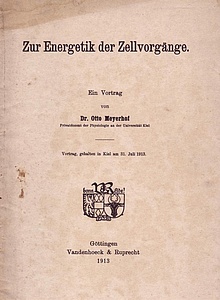
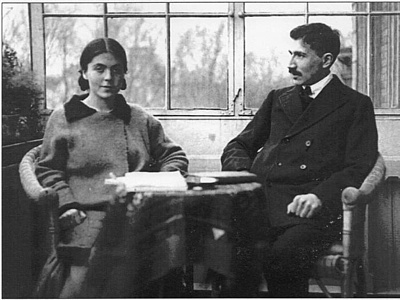
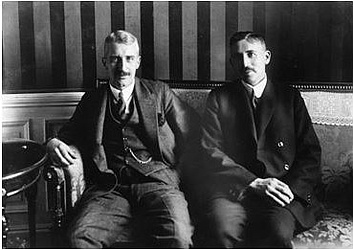
In Kiel, Meyerhof is continuing his research in the field of physiological chemistry. For muscles to function, they need energy. This energy is released by chemical processes. Using isolated frog muscles, Meyerhof investigates oxygen consumption and finds that carbohydrates are converted into lactic acid in the absence of oxygen. When oxygen is supplied, the lactic acid is formed again. Meyerhof is the first to calculate how much energy is produced when glocuse is burned and records the relationship between oxygen consumption and lactic acid production in the muscle using the "Meyerhof quotient". According to this, during muscle contraction, one fifth of the lactic acid formed from glucose is converted into energy and four fifths into glucose. This is not unique to frogs, but is approximately the same in all living things.
For his research on metabolism in muscle, Meyerhof was awarded the Nobel Prize in 1922, together with the Englishman Archibald Vivian Hill. Hill studied heat production in muscle independently of Meyerhof's research.
When Kiel University established a chair of physiological chemistry, Meyerhof was passed over for the appointment despite his Nobel Prize. In 1923 he turned down a call to Yale University in the USA and one year later went to the Kaiser Wilhelm Institute for Biology in Berlin as head of department, where Otto Warburg was also working in the meantime.
In 1929 Meyerhof was appointed head of the Institute of Physiology at the newly founded Kaiser Wilhelm Institute for Medical Research in Heidelberg, and became a full honorary professor at the medical faculty. The laboratories created according to his plans and equipped with the best devices provide him with excellent working conditions.
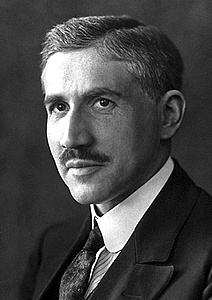
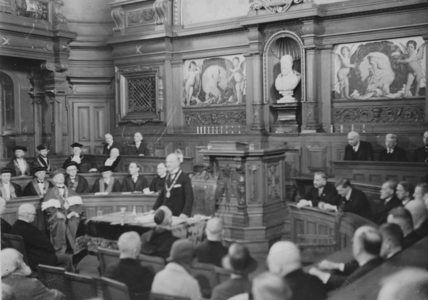
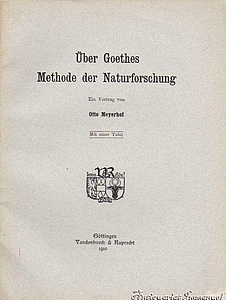
In 1931, Prof. Meyerhof was elected a member of the Heidelberg Academy of Sciences and remained head of the institute in 1933, despite his Jewish origins. But in a letter dated November 16, 1935, the Baden Minister of Culture revokes his teaching license. The working conditions as head of the institute increasingly deteriorate and finally Prof. Meyerhof is dismissed.
In September 1938 Prof. Meyerhof leaves Germany together with his wife Hedwig and their children Gottfried, Bettina and Walter. With the help of his former student Alexander von Muralt, the family initially flees to Switzerland. At the "Institut de Biologie Physio-Chimique" in Paris, Meyerhof works as a research director. When German troops marched into Paris in June 1944, he was able to emigrate to the United States via Spain and Portugal. At the University of Pennsylvania in Philadelphia, the Rockefeller Foundation establishes a research professorship for physiological chemistry for him. In 1949, Prof. Meyerhof was elected to the National Academy of Science.
Although Meyerhof was a passionate researcher, he also enjoyed philosophy, music, literature and especially art throughout his life. Goethe and Rilke are his favorite poets. As early as 1910, he had given a lecture "On Goethe's Method of Natural Research.
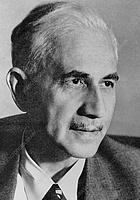
On October 6, 1951, Prof. Otto Meyerhof dies in Philadelphia as a result of his second heart attack.
On April 25, 2001, Otto Meyerhof's children Prof. Geoffrey Meyerhof, Dr. Bettina Emerson, and Prof. Walter Meyerhof, who now live in the USA and Canada, attend the inauguration of the "Otto Meyerhof Center" founded by the University of Heidelberg for outpatient medicine and clinical research into diseases that have hitherto been difficult or impossible to treat.
Bert Sakmann
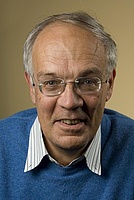
Bert Sakmann was born in Stuttgart in June 1942. He grew up in Lindau on Lake Constance and went to elementary school there. When he returned to Stuttgart, he attended the Wagenburg High School. His favorite subject is physics. In his free time, Bert enthusiastically designs and builds models of motor and sailing ships as well as model airplanes. Everyone thinks Bert will become an engineer one day. In his last year at school, however, he learns about cybernetics and its possible application to biology and is fascinated by it.
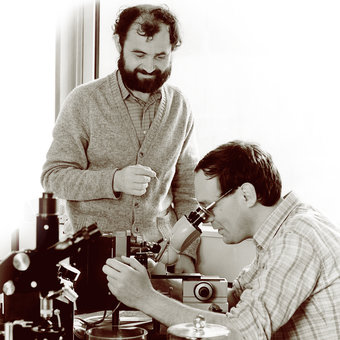
After graduating from high school in 1961, he began studying medicine in Tübingen. After passing his medical examination, he continued his studies in Freiburg, Berlin and Paris. He passed his state examination at the Ludwig Maximilian University in Munich in 1967 and remained there as a medical assistant. At the same time, he worked as a doctoral student and research assistant for Prof. Otto Creutzfeld of the Kraepelin Institute of the Max Planck Institute for Psychiatry. Bert Sakmann is engaged in electrophysiological studies on the retina, as he would like to write his doctoral thesis in this field. He experiments for three years on the neurophysiological basis of light adaptation in the visual system of cats. In the process, he realizes that without knowledge of synaptic connections, the central nervous system (CNS) is difficult to understand. A lecture by Prof. Bernard Katz on nerves, muscles and synapses convinces him that cell physiology will help him better understand the functions of the central nervous system.
Before joining Prof. Katz's Department of Biophysics at University College in London as a Postdoctoral Fellow in 1971, he marries his wife Christiane, whom he had already met in Tübingen.
At University College in London he is trained in cell biophysics and learns the basics of synaptic transmission. He decides to do research on its molecular aspects in the future. He recognizes the direct recording of elementary events as the greatest experimental challenge.
In 1974 Sakmann returns to Prof. Creutzfeld, who is now doing research in Göttingen, and completes his dissertation on "Electrophysiology of neural bright adaptation in the cat retina". When Otto Creutzfeldt offers him his own laboratory at the Max Planck Institute for Biophysical Chemistry in Göttingen in the same year, Dr. Sakmann accepts the position as a research assistant. At the institute, he again meets Erwin Neher, whom he has known since his time at the Kraepelin Institute in Munich.
Both want to test the recording of elementary events with extracellular pipettes on ion channels in denervated (without nerve supply) muscle fibers. So far, ion channels exist only as a mental model and it has not been researched how these current locks are constituted.
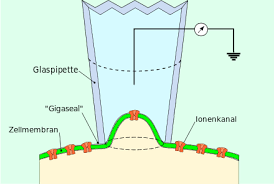
Cells exchange signals with each other in tissues. Either via messenger substances such as hormones or via the nervous system. This signal exchange, which is necessary for coordinated behavior of the organs, for example between nerves and muscles, takes place by changing the electrical voltage of the cell membrane.
Bert Sakmann and Erwin Neher developed the "patch clamp technique", in which a thin glass pipette with a diameter of only a thousandth of a millimeter is placed so tightly on the cell membrane that even the smallest electrical currents between body cells and their environment can be measured . This electrophysiological method enables the two scientists to study almost any type of channel in almost any type of cell and to break down electrical signals and switching processes of excitable cells into individual signals of single molecules.
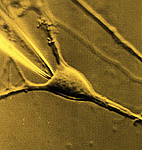
They demonstrate for the first time that tiny (0.5 to 0.6 millionths of a millimeter) channels exist in the cell envelope through which charged particles, the ions, flow from the cell interior to the environment. These ion channels enable the communication necessary between cells, and their stimulation or inhibition. Ion channels control not only the processes of electrical excitation and synaptic transmission, but also many bodily functions, especially in sensory, motor, and secretory areas. There are many different ion channel types, and they perform regulatory tasks in almost all cell types.
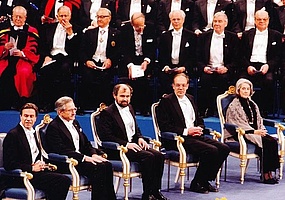
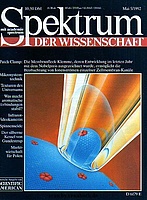
In 1982 Sakmann habilitated at the University of Göttingen with the paper "Observation of transmitter-receptor interaction at the molecular level: high-resolution current measurements on small membrane areas of single cells and cell-free membrane fragments" and in 1985 he became director of the Department of Cell Physiology at the Max-Planck-Institut for Biophysical Chemistry as well as full professor at the medical faculty of the University of Göttingen in 1987.
His continuing interest in the synaptic physiology of the central nervous system leads him to further research on new methods for the detection of quantum synaptic currents and elementary events in the CNS using the "patch clamp technique". In the process, Prof. Sakmann becomes convinced that collaboration with molecular biologists is necessary to understand synaptic transmission in the CNS. Therefore, in 1989 he moved to Heidelberg as director to the Department of Cell Physiology at the Max Planck Institute for Medical Research, one of the molecular biology centers in Germany. Here he studies the functions and dysfunctions of CNS synapses at the molecular level, combining the techniques of biophysics and molecular biology.
In 1991, Pro. Bert Sakmann, together with his colleague Prof. Erwin Neher, was awarded the Nobel Prize in Physiology or Medicine for the development of a method for the direct detection of ion channels in cell membranes and the study of signal transmission within the cell and between cells.
Prof. Sakmann is now emeritus, but continues his research on cellular and molecular processes in mammalian synapses. At the MPI for Neurobiology in Martinsried near Munich, he has headed the emeritus group "Functional Anatomy of a Cortical Column" since 2008. The circuits in the cerebral cortex are responsible for behavior or decision making. Research is being conducted into how synaptic transmission of signals changes during learning processes. Ion channels also play an important role in this process.
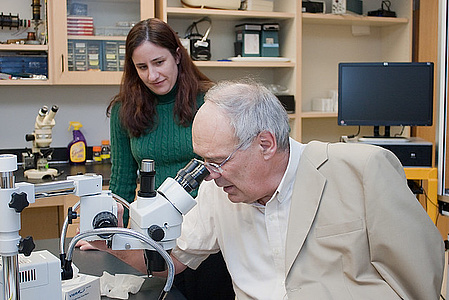
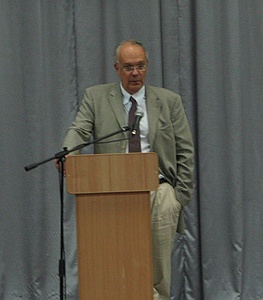
Harald zur Hausen
Harald zur Hausen was born in Gelsenkirchen in March 1936, the youngest of four children of Eduard and Melanie zur Hausen. When he starts school at the age of six, there is a war on and lessons are soon out of the question. This gives Harald, who is very interested in animals and plants, the opportunity to often roam through the forest and heath and observe nature. Despite the persistent lack of lessons, he passes the entrance examination for the Gymnasium, which was customary at the time. Although the parents are not wealthy, the good education of their children is very important to them. The first time at the Gymnasium is hard. There is a lot of catching up to do. But Harald manages to transfer, even if only with "great misgivings". Soon, however, he takes a great liking to the natural sciences. Biology becomes his favorite subject.
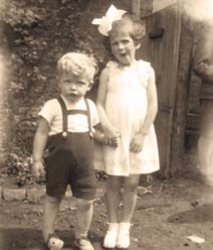
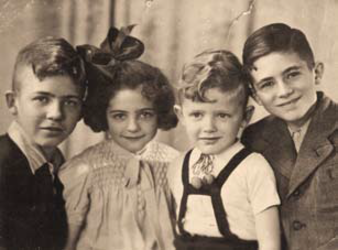
In 1950, the family moved to Vechta near Oldenburg. Here, too, Harald enjoys being out in nature. But he also enjoys reading, especially the biographies of researchers such as Robert Koch. He realized early on that he too would like to be a researcher one day. In 1955, he graduated from the venerable Antonianum Gymnasium in Vechta and began studying medicine in Bonn. In December 1960, he received his doctorate in Düsseldorf and spent the next two years working as a medical assistant at various hospitals in order to obtain his license to practice medicine.
His time as a scientific assistant at the Institute for Hygiene and Microbiology at the University of Düsseldorf initially begins disappointingly for the young Dr. zur Hausen, as he receives little guidance. But eventually he finds access to laboratory work and enjoys research. He stays for more than three years until he learns by chance that a research assistant is wanted at the Virological Institute of the Children's Hospital of Philadelphia (USA) . He applied and moved to Philadelphia in 1966, where he met Gertrud and Werner Henle and conducted research with them on the connection between the Epstein-Barr virus and a cancer that is common in Africa. From then on, the topic of "viruses and cancer" never left him. The development of cancer from viral infections became his research focus.
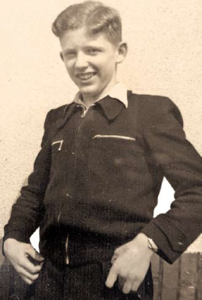
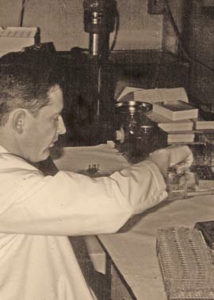
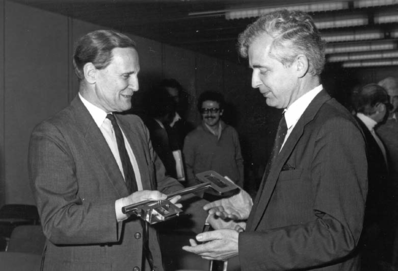
In 1969, he returned to Germany and habilitated at the Julius Maximilian University in Würzburg with his thesis on the "Infection of tissue culture cells with the oncogenic adenovirus type 12". In 1972 Prof. zur Hausen became director of the Institute of Clinical Virology at the University of Erlangen-Nuremberg. Here he begins his papillomavirus study. Having become aware of the degeneration of genital warts through a large number of reports, he pursues the suspicion that the papillomaviruses contained in genital warts could be responsible for this. He succeeds in isolating papillomavirus genome from hand and foot warts and thus documents that it differs from genital wart genome.
His assumption that different types of papillomaviruses are responsible in each case is confirmed. Hand and foot warts are always benign, but genital warts can degenerate into cancer. This leads Prof. zur Hausen to his thesis, published in 1976 and initially by no means uncontroversial, that papilloma viruses affecting the cervical tissue in particular cause cervical cancer. Genes regulate the growth and division of cells. However, this mechanism can become unbalanced when a viral gene invades the DNA of the host cell. If the immune system fails to fight the viruses, this cell can multiply uncontrollably and tumors develop. A process that often progresses unnoticed for many years.
But which type of papillomavirus is responsible for this? This question is being investigated by Prof. zur Hausen in Freiburg, where he was appointed to the chair of virology in 1977. In order to prove his thesis scientifically, he and his working group, which also included the virologists Lutz Gissman and Ethel-Michele de Vielliers, his future wife, examined samples of cervical carcinomas for papillomaviruses. Finally, in 1983, they succeeded in isolating the genome of the papillomavirus type HPV16 from cervical tumors;HPV 18 followed in 1984. Both are responsible for about 70 percent of all cervical tumors, the second most common tumor disease in women.
When the German Cancer Research Center in Heidelberg is looking for a new scientific chairman of the foundation's board in 1983, Prof. zur Hausen applies and convinces the board with his concept for reorganization.
Despite the new and responsible task, Prof. zur Hausen and his research group continue their research on human papillomaviruses and succeed in identifying the viral genes E6 and E7 inside cancer cells.
The proof for his thesis, which was still bold in 1976, that human papillomaviruses cause cervical cancer is provided and enables the development of a vaccine. But initially it proves extremely difficult to convince a pharmaceutical company that a vaccination against cancer is not only possible, but that it is also economically worthwhile to invest money in its development.
In fact, it was not until the early 1990s that Prof. Lutz Gissmann and Prof. Matthias Dürst, a former student of Prof. zur Hausen, succeeded in developing a vaccine. After studies proved that the vaccine reliably protected against infections with human papillomaviruses 16 and 18, it became available in Germany in 2006. The Standing Commission on Vaccination (STIKO) initially recommends vaccination for girls between the ages of 12 and 17, and since 2018 for girls and also boys as young as 9. Men are not only spreaders of the infection, they themselves are also protected by the vaccination against cancers such as oral pharyngeal cancer or anal cancer, which are caused by the same HPV types.
Prof. zur Hausen led the German Cancer Research Center in Heidelberg for twenty years until his retirement in 2003, making it one of the world's leading cancer research centers. Among other things, he establishes Clinical Cooperation Units, in which a physician heads a research unit at the DKFZ and at the same time a ward in the clinic. This ensures that patients in the clinic benefit from research findings as quickly as possible.
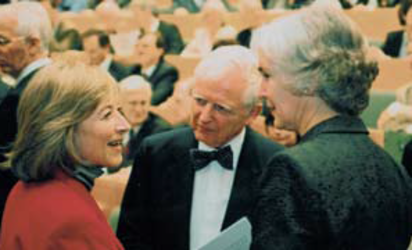
In 2008, Harald zur Hausen is awarded the Nobel Prize in Medicine or Physiology for proving that human papillomaviruses cause cervical cancer. Other prize winners are the Frenchmen Luc Montagnier and Francoice Barré-Sinoussi for the discovery of the AIDS pathogen HIV.
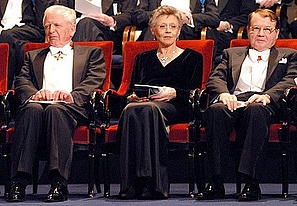
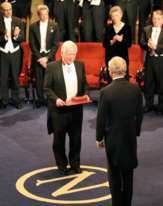
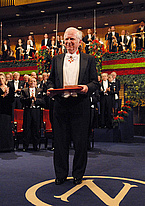
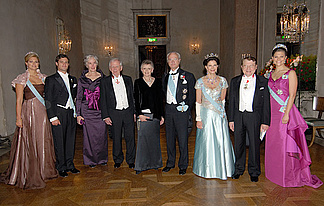
An infinite number of other awards, such as 30 honorary doctorates worldwide, the Grand Cross of the Order of Merit of the Federal Republic of Germany with star, honorary citizenship of Heidelberg, to name but a few, pay tribute to his extraordinary services. The Comoros have even dedicated a stamp to him.
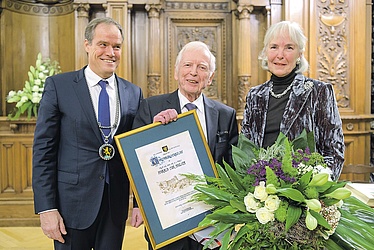
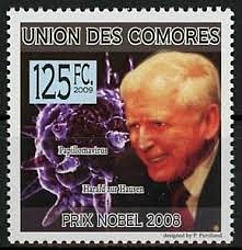
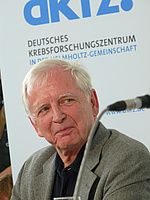
Today, Prof. zur Hausen can still be found in the laboratory every day. He is currently investigating with his research group whether the consumption of milk or beef is a risk factor for the development of colon or breast cancer. Even if a viral infection does not cause cancer in cattle, it could be that it does in humans. Prof. zur Hausen is convinced "that infectious events play a much greater role in the development of cancer than previously thought."
We have his persistent research to thank for the first vaccination that specifically targets one type of cancer, cervical cancer.


